On Friday, we were delighted to welcome Her Majesty The Queen to open our pioneering new Information Age gallery at the Science Museum. The Queen opened the gallery by sending her first tweet, 76 years after her first visit to the Museum.
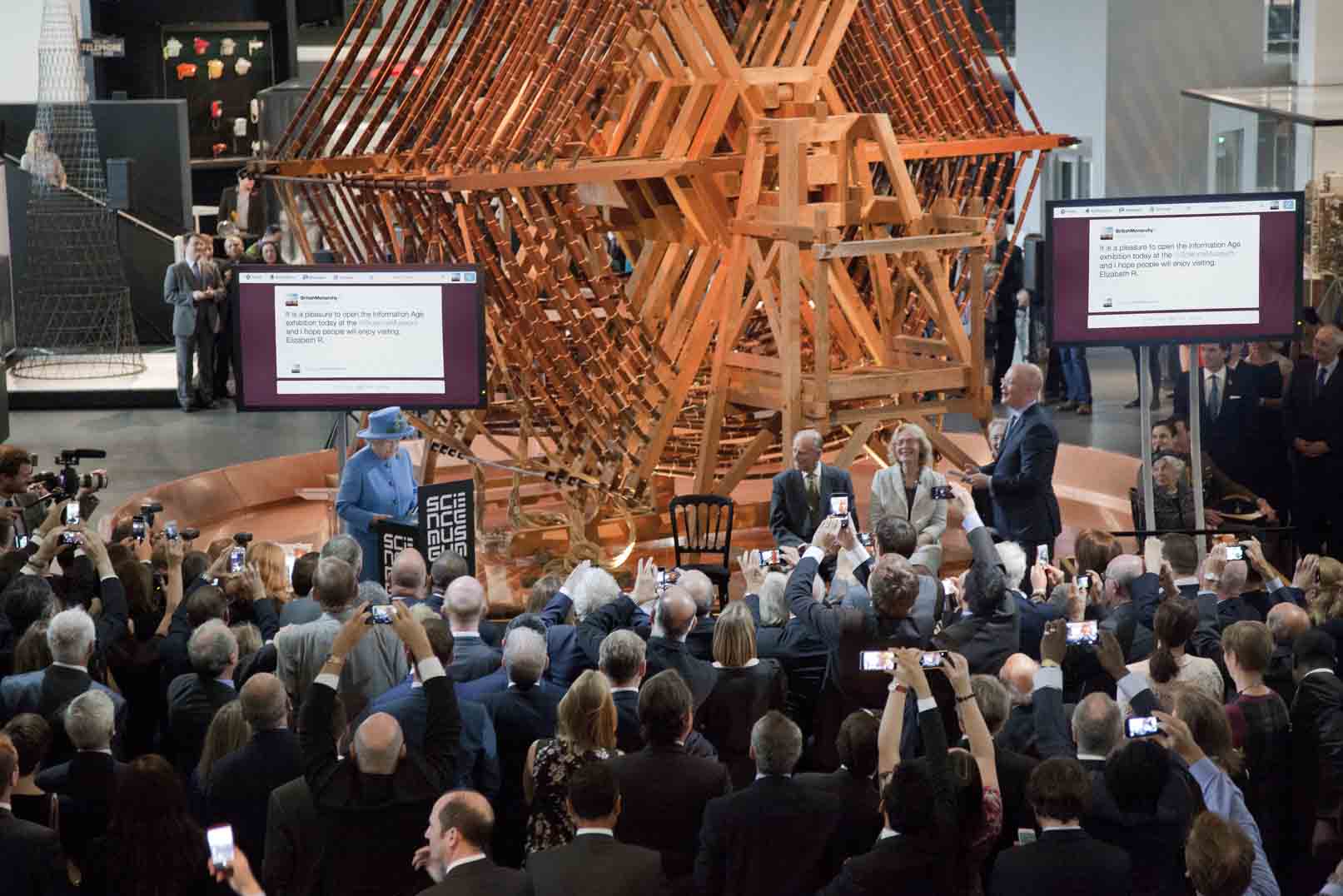
The historic moment took place in front of around 600 supporters of the Museum who had gathered to celebrate the opening of Information Age. The audience included communications entrepreneurs, authors and experts, from Baroness Lane Fox, Hermann Hauser and Mo Ibrahim to Prof Steve Furber, James Gleick, Tom Standage and Sir Nigel Shadbolt.
Guests received a warm welcome from Ian Blatchford, Science Museum Director, before being treated to a performance of John Adams’ ‘A Short ride in a fast machine’ by the Philharmonia concert band.
Standing in front of the monumental aerial inductance coil from Rugby Radio which was donated to the Science Museum by BT, Gavin Patterson, CEO of BT Group, Lead Principal Sponsor of the gallery, spoke of his tremendous pride in seeing the iconic tuning coil reassembled and on public display.
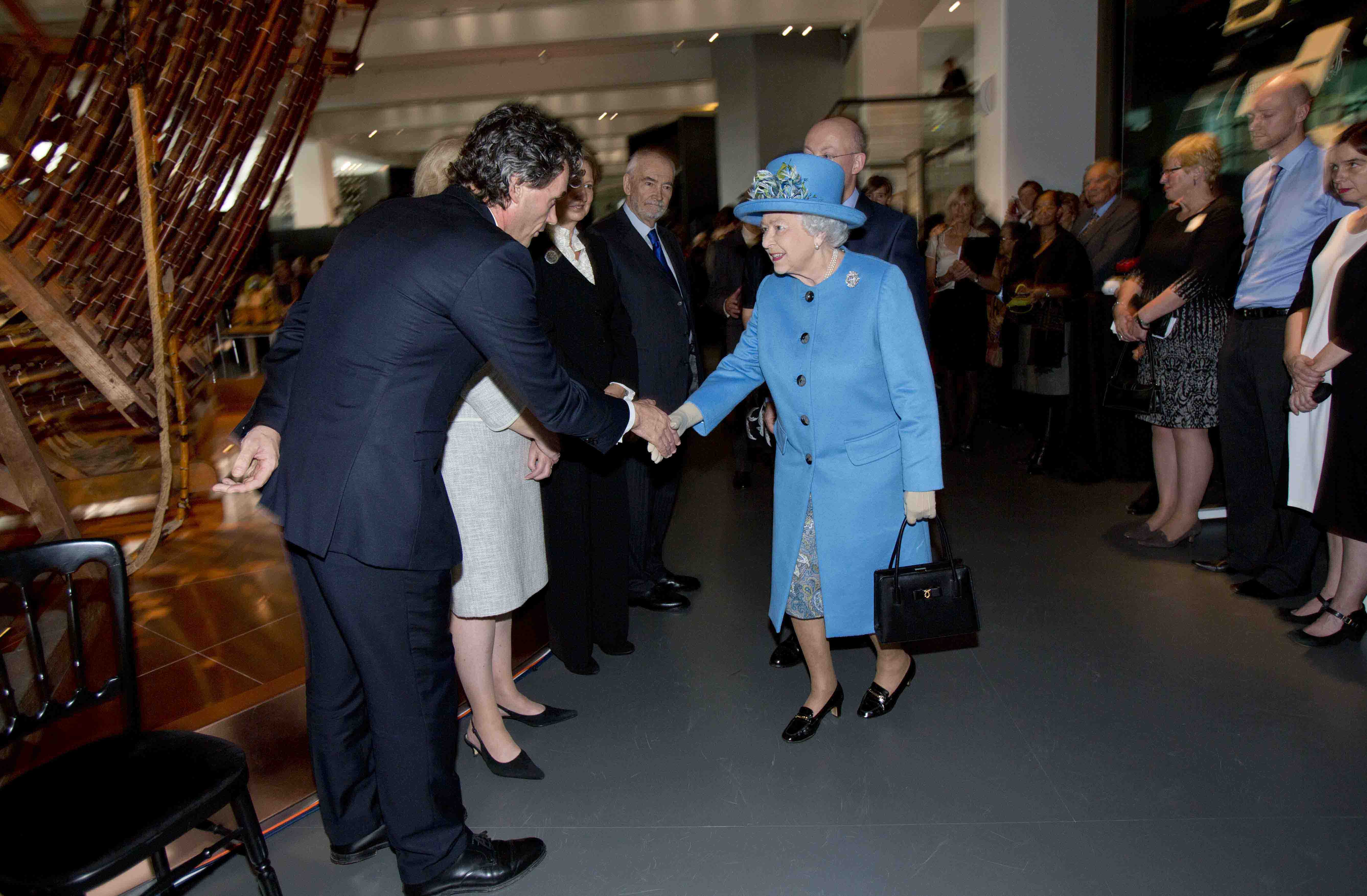
He used the opportunity to highlight some triumphs from BT’s history of pioneering new technologies, from the first electric telegram to the first transatlantic telephone call. He said that the “spirit of the Information Age creates a future of endless possibilities” and that BT was thrilled to be involved in the gallery.
Simon Segars, CEO of ARM, Principal Sponsor, stressed the growing need for more young people to take up careers in engineering, which he described as “vital to the future prosperity of the UK”.
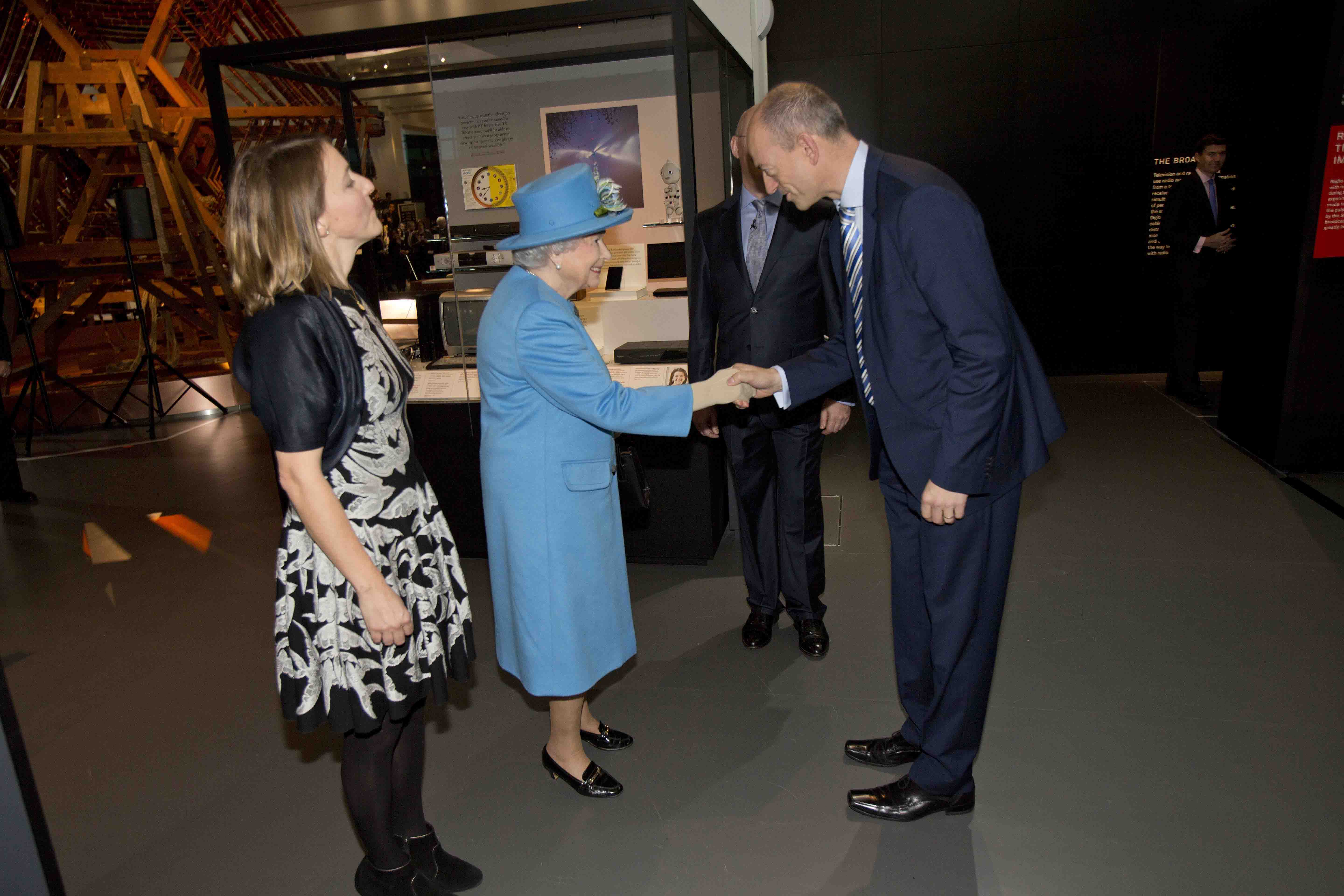
Mr Segars described how his first visit to the Science Museum as a child had inspired him to pursue a career in engineering. He expressed his hopes that today’s young people would take similar inspiration from the Information Age gallery.
The relationship between the arts and science was the focus of Patricia E Harris’ speech as CEO of Bloomberg Philanthropies, Principal Funder of the gallery. Ms Harris spoke of Bloomberg’s interest in supporting institutions that harness the power of both arts and technology, praising Rafael Lozano-Hemmer’s new digital and interactive artwork in the gallery. Information Age was, she said, a “perfect fit” for Bloomberg’s support, as the Science Museum is one of the most popular museums in the UK.
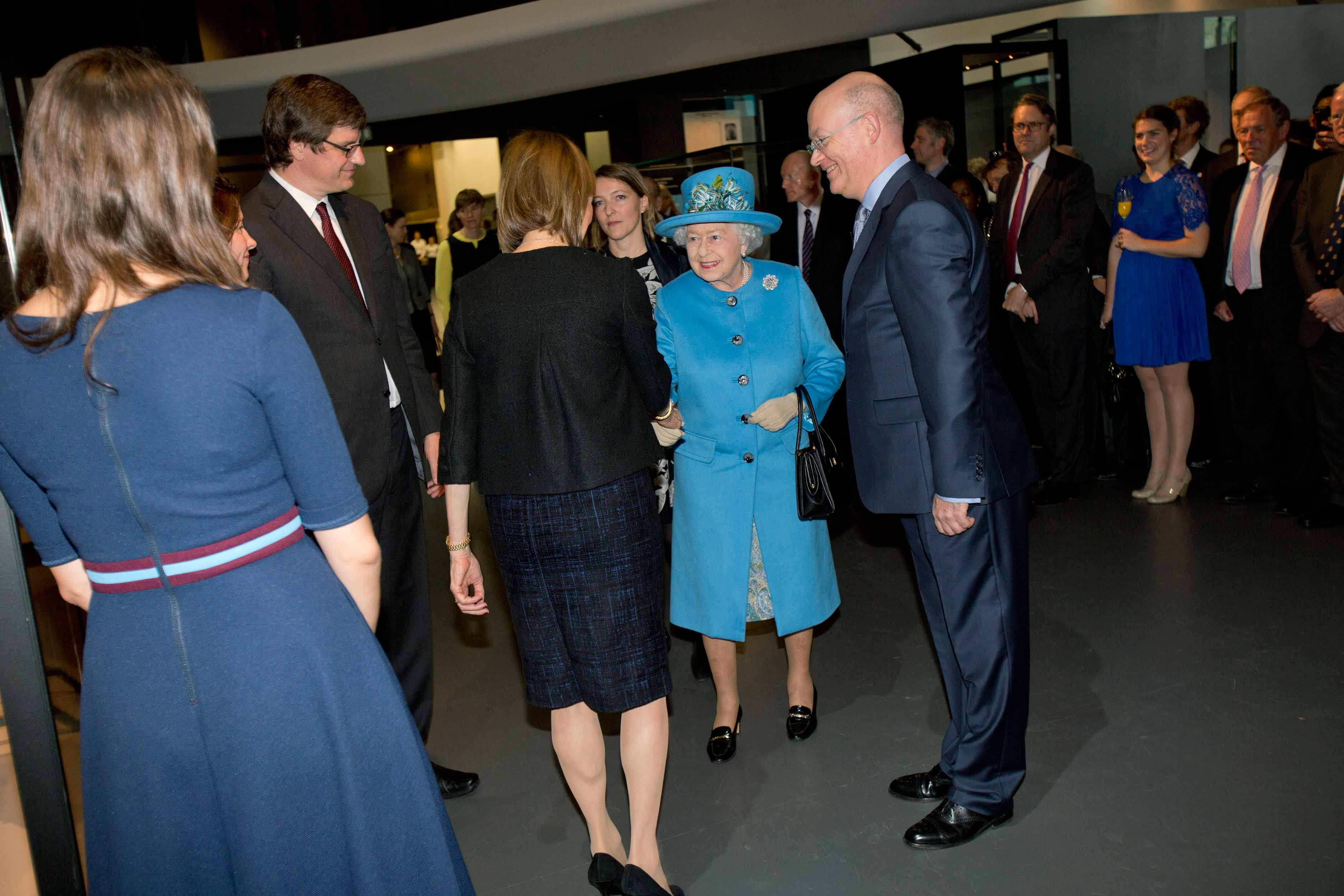
The Museum’s ability to inspire the next generation, was further highlighted by Brian McClendon, VP Engineering at Google and the founder of Google Earth. Google is a Principal Funder of the gallery and has contributed a number of objects including a Google Corkboard Server which is on display in the Web section of the gallery.
On arrival at the Museum, The Queen and The Duke of Edinburgh were greeted by the Lord Lieutenant, Sir David Brewer, the Mayor of the Royal Borough of Kensington and Chelsea, Councillor Maighread Condon-Simmonds, Ian Blatchford, Director of the Science Museum and Dr Gill Samuels, Interim Chairman of the Science Museum Group. Her Majesty also received a welcome cheer in the Energy Hall from a group of children from Marlborough Primary School who were visiting the Museum that day.
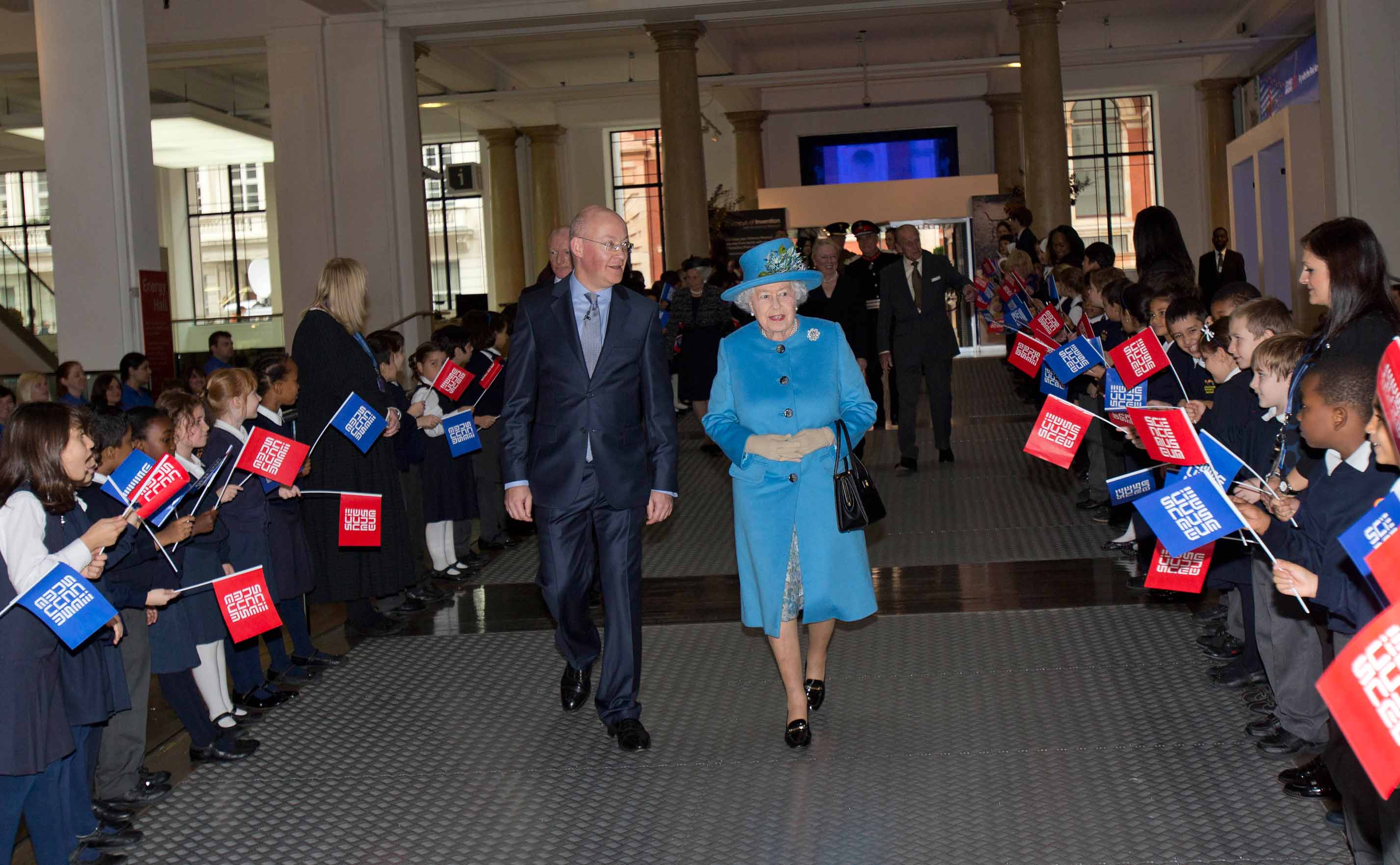
Within the Information Age gallery, Lead Curator Tilly Blyth gave The Queen a short tour of some of the exhibition highlights, from a bright yellow call box from Cameroon to the BBC’s first radio transmitter from 1922. The Queen and The Duke of Edinburgh also visited the broadcast area of the gallery and listened for the first time to recordings of the personal recollections of people whose first experience of television was watching the Coronation in 1953.
Following the tour, Ian Blatchford welcomed The Queen and The Duke of Edinburgh, describing Information Age as “the beginning of a renaissance for the Museum”. He thanked BT for its generous donation of 80 objects to the gallery and expressed his delight that “our friends at CERN have lent us Tim Berners-Lee’s NeXT computer, the first web server.”
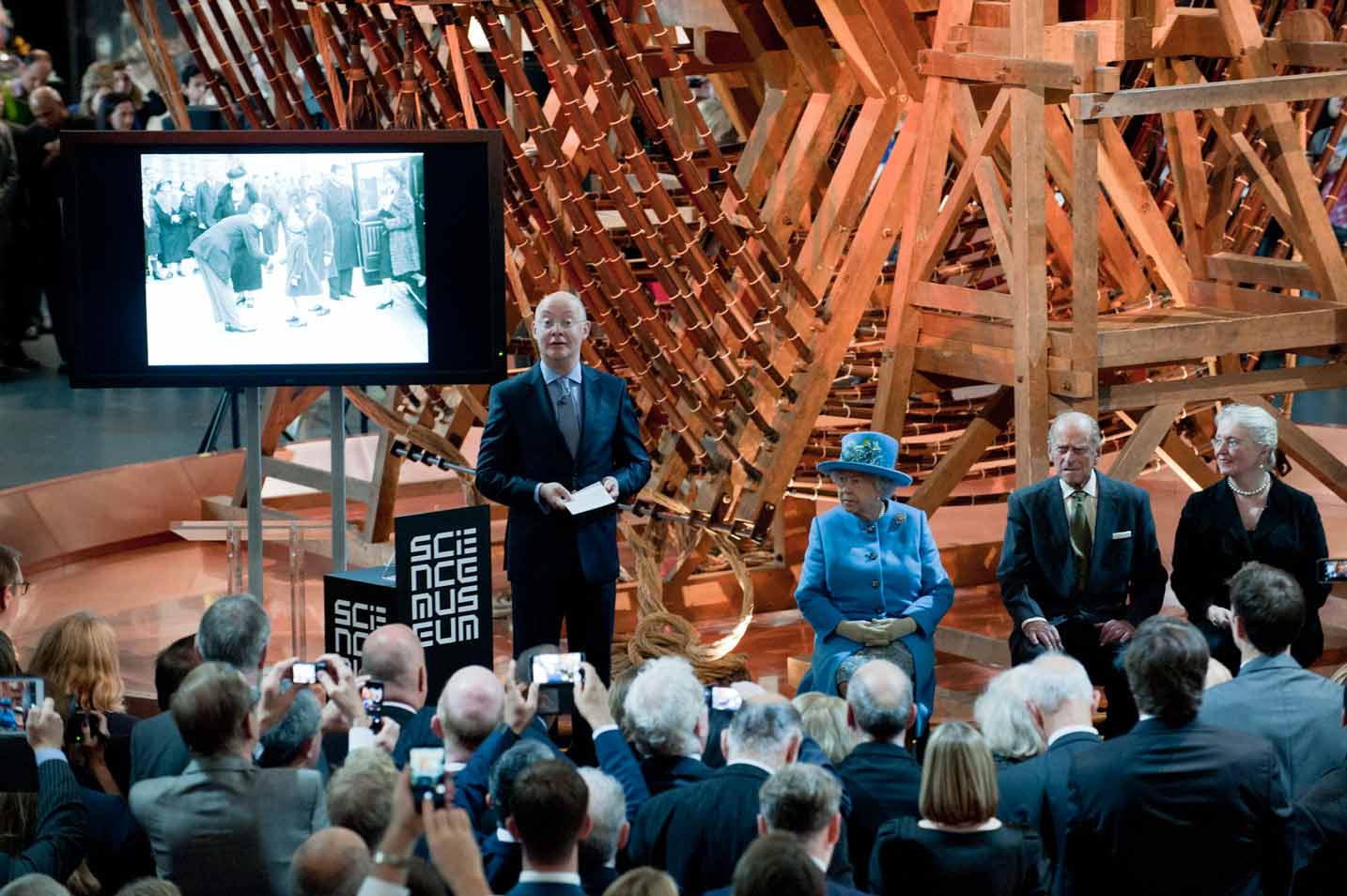
Carole Souter CBE, Chief Executive of The Heritage Lottery Fund emphasised the importance of collaboration between public and private donors and their £6 million contribution to the gallery. She spoke warmly of HLF’s “great respect and fondness” for the Science Museum and our commitment to bringing science and technology to life in a way that everyone can relate to.
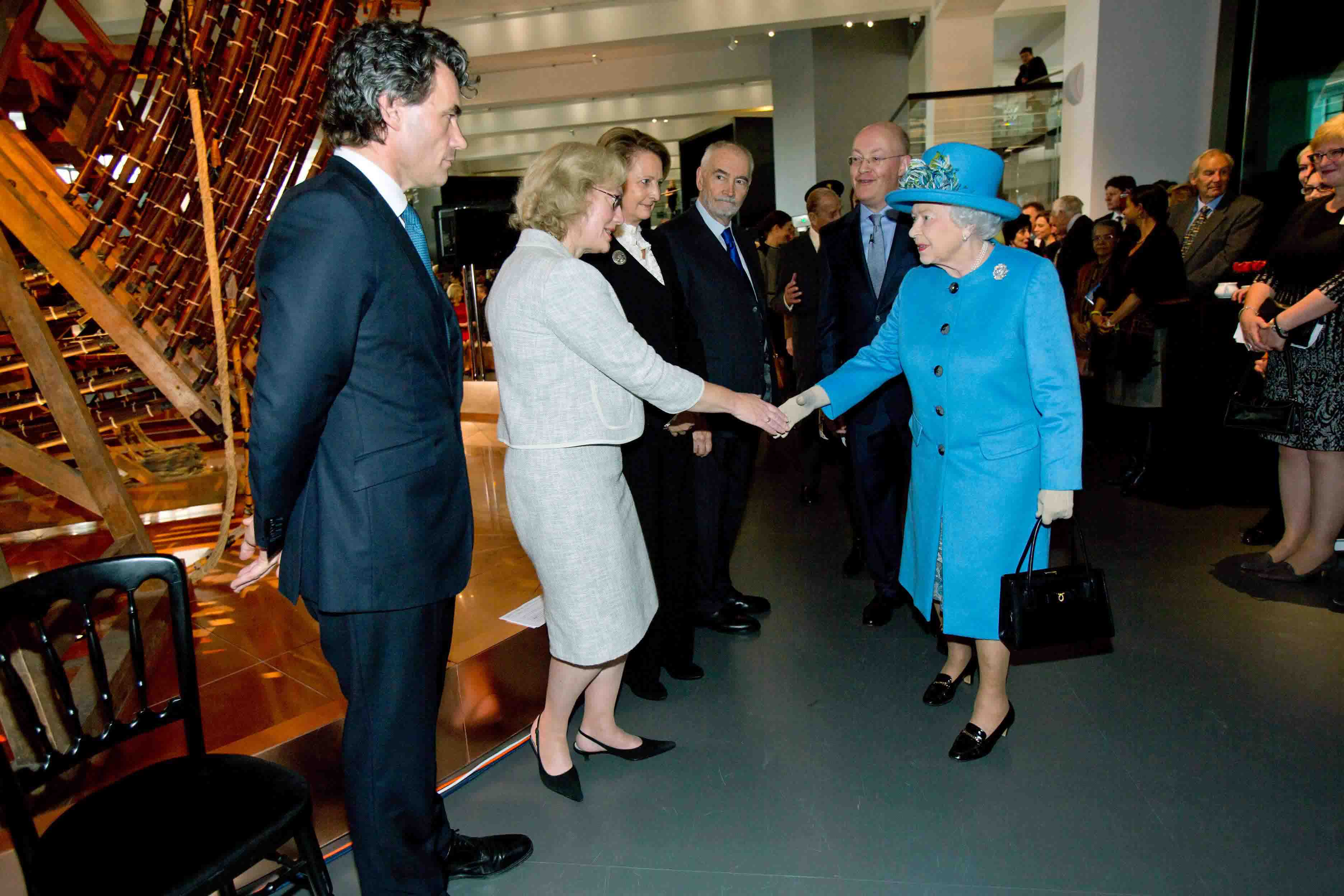
The Queen later accepted an Honorary Fellowship of the Science Museum from Dr Gill Samuels, Interim Chairman of the Trustees. The presentation was made by Michael G Wilson OBE, Chairman of the Science Museum Foundation and Ms Edwina Dunn, Trustee of the Foundation. The Fellowship is an honour normally awarded to outstanding scientists.
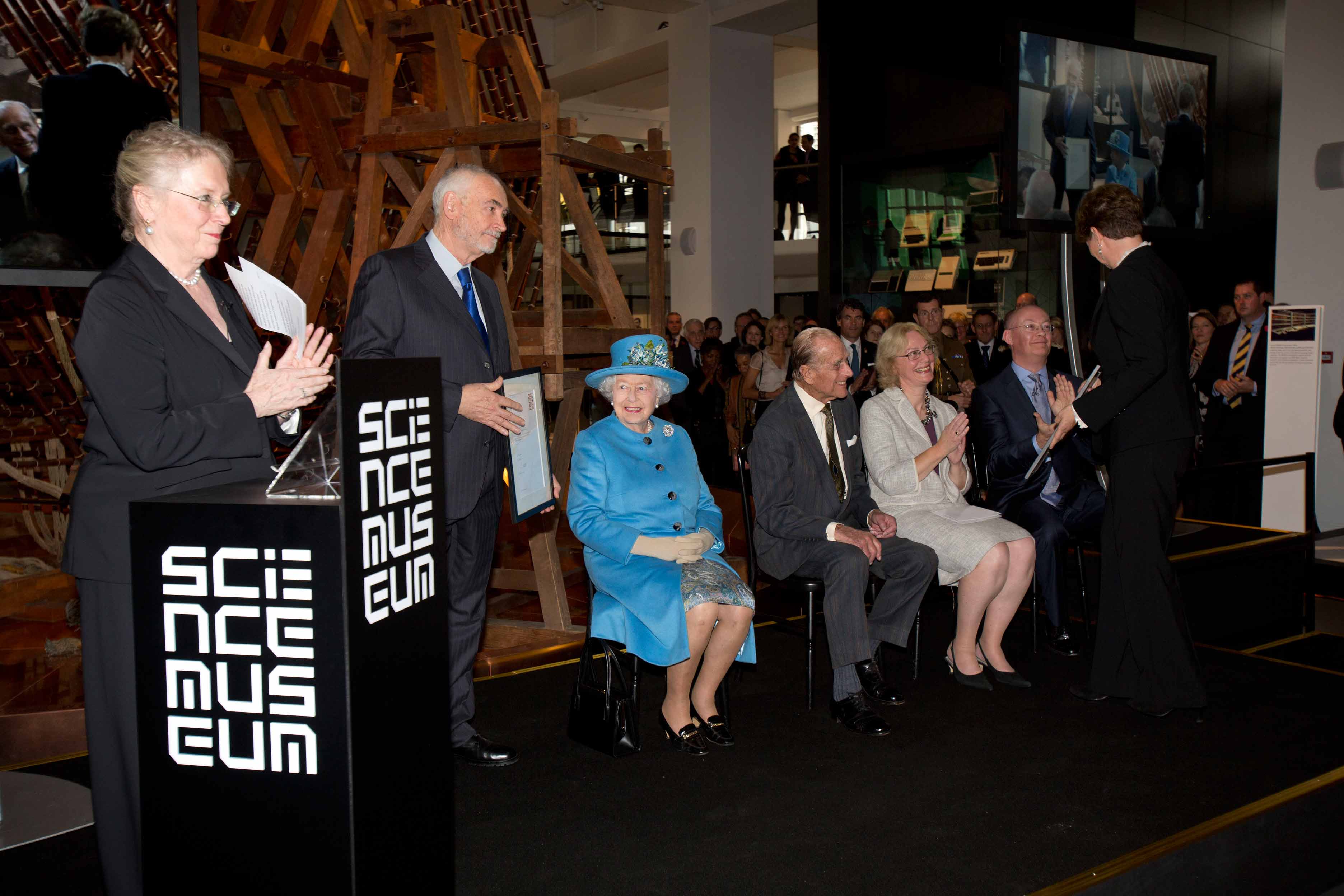
Inviting The Queen to open the gallery, Science Museum Director Ian Blatchford remarked on how royalty had embraced communications technology, from the day Queen Victoria took an interest in the invention of the telephone, which was demonstrated to her in January 1878 by Alexander Graham Bell at Osborne House, Isle of Wight. “Your Majesty has followed in this tradition,” said Mr Blatchford. “You made the first live Christmas broadcast in 1957 and an event relished by historians took place on 26 March 1976, when you became the first monarch to send an email, during a visit to the Royal Signals and Radar Establishment.”
He then invited The Queen to join him to “send your first Tweet”. The Queen removed a glove to send her pioneering tweet from the @BritishMonarchy Twitter account.
Following a fanfare from the Philharmonia, The Queen was presented with a specially created bouquet of flowers by Catherine Patterson, the daughter of Gavin Patterson, CEO of BT Group. Made from punch cards and telegraph printing tape, the bouquet was designed by Mark Champkins, the Science Museum’s Inventor in Residence.
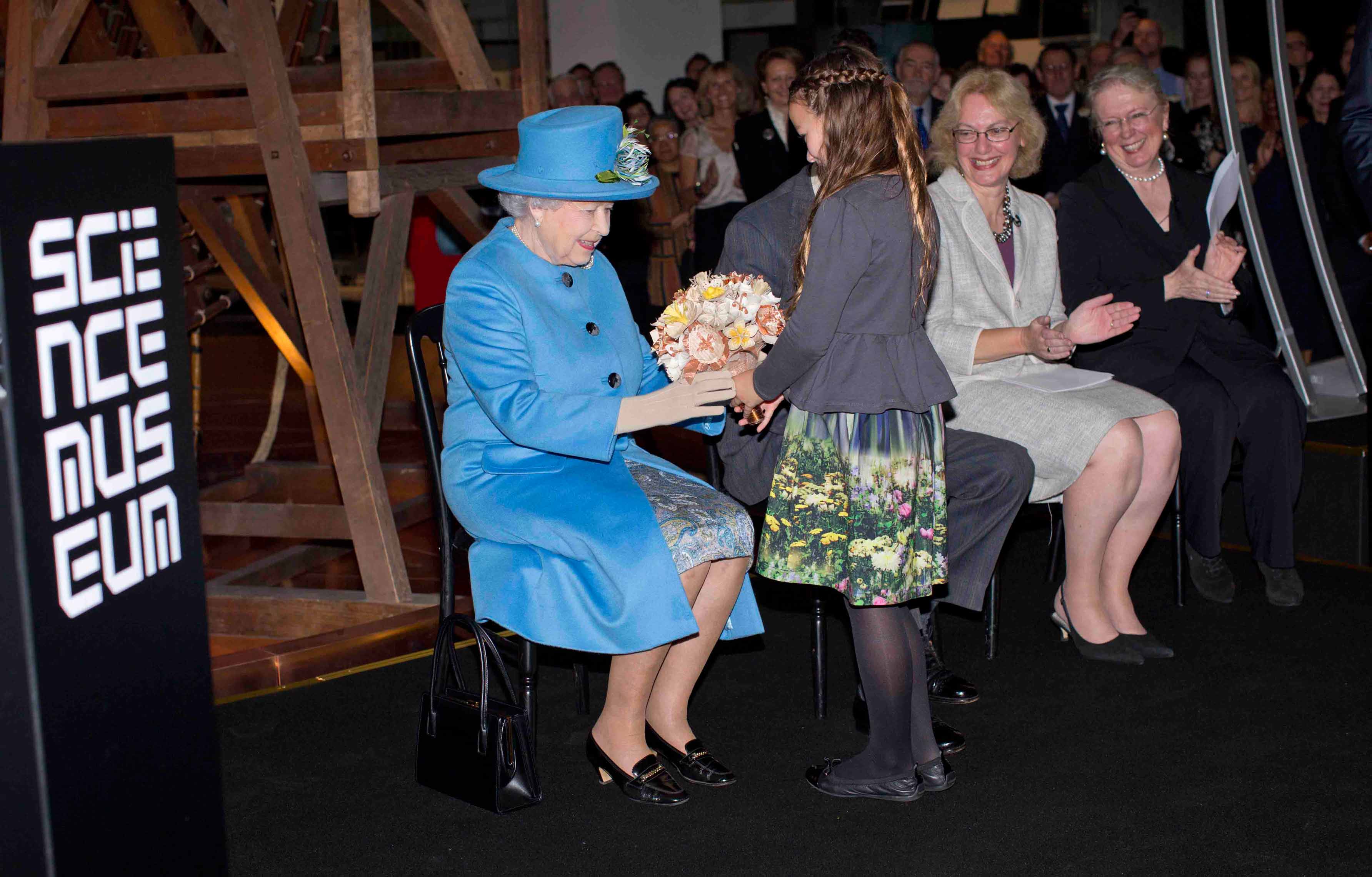
The Information Age gallery is now open to the public on the second floor of the Science Museum. More information can be found on our website.
Information Age has been made possible through the generous support of the Heritage Lottery Fund, BT (Lead Principal Sponsor), ARM (Principal Sponsor), Bloomberg Philanthropies and Google (Principal Funders). Major Funders include the Garfield Weston Foundation, the Wolfson Foundation, the Bonita Trust and Motorola Solutions Foundation. Additional support has been provided by Accenture (Connect Circle Sponsor) as well as the Institution of Engineering and Technology (IET), Cambridge Wireless (CW) Qualcomm Foundation, The David and Claudia Harding Foundation and other individual donors. The Science Museum would also like to thank the BBC for their assistance.